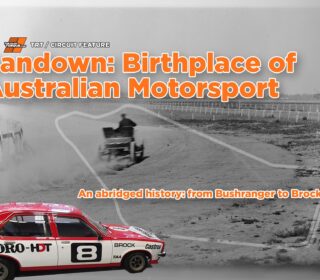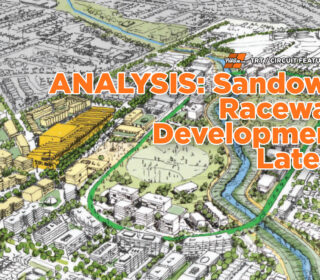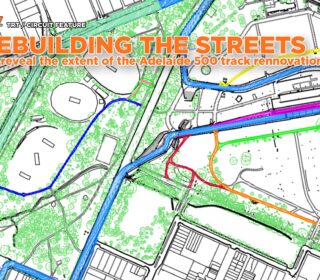Melbourne’s Other 1950s Lakeside Circuit Uncovered
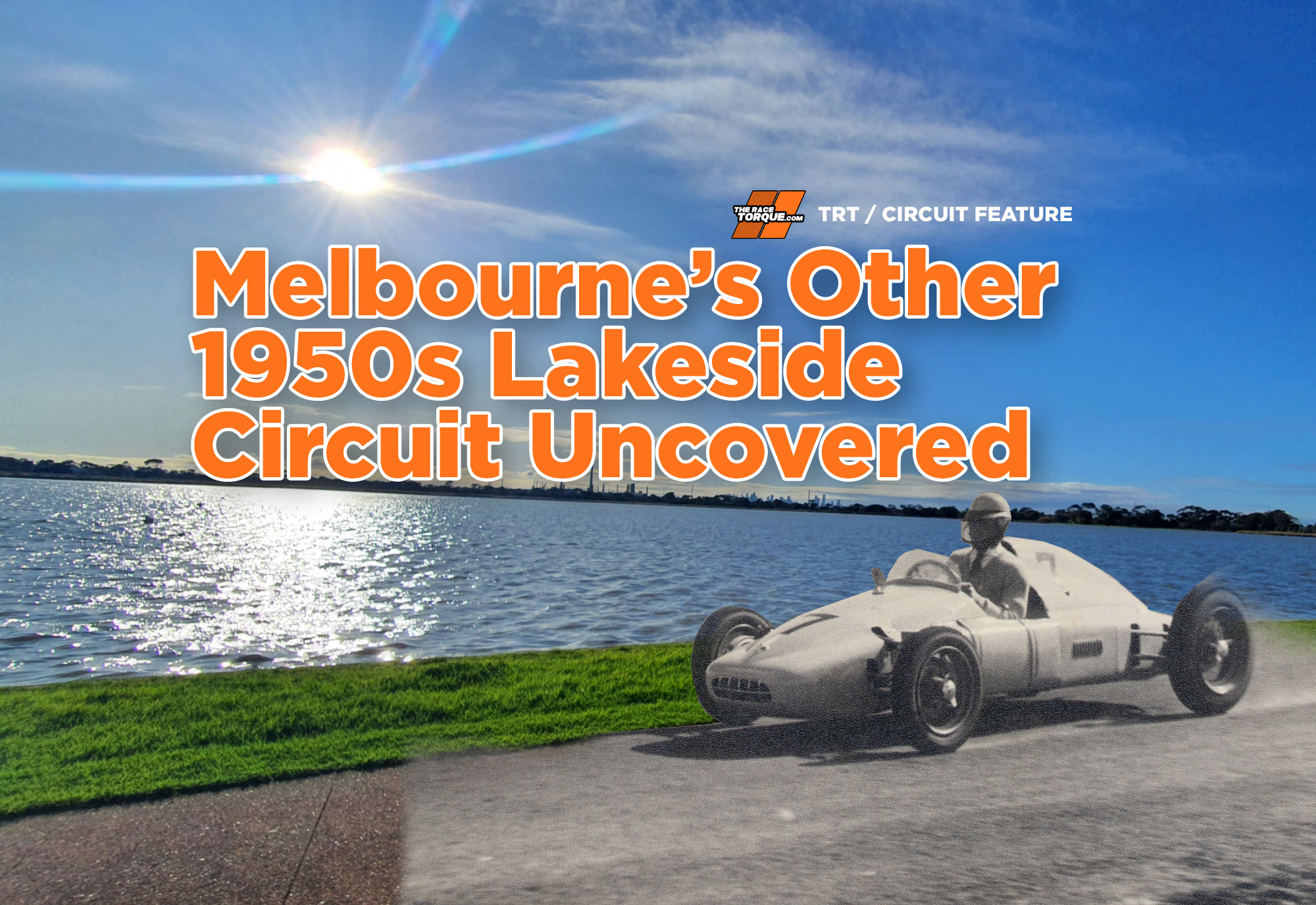
Australia is dotted with relics that are hiding in plain sight for keen motorsport archeologists to find, with one such site existing in Melbourne’s western suburbs, a track that briefly played host to the greats of Australian motorsport.
At the same time as the Australian Grand Prix circuit was being formed by the Light Car Club around the Albert Park Lake in the city’s inner suburbs, only 10km to the west, another track was brought to life, coincidentally, also around a body of water.
The Altona Road Circuit was literally constructed on the edge of what is now known as Cherry Lake, with the build on the 3.62km long, 7.5m wide track kicking off in April 1953, backed by a consortium of six businessmen headed by local identity Neil Charge.
Early estimates for the cost of the project varied wildly in the press of the day, with figures ranging between £20,000-60,000, although once opened, a final sum of £35,000 was settled upon, with a portion of the finance raised via the sale of 10-year memberships at £10 each.
Like more modern facilities, early proposals included a wide range of community uses, such as “aerial sports”, polo, tennis, bowling, croquet, cricket and football, with future plans including provision for grandstands, changing rooms, full racing pits and permanent refreshment stations.
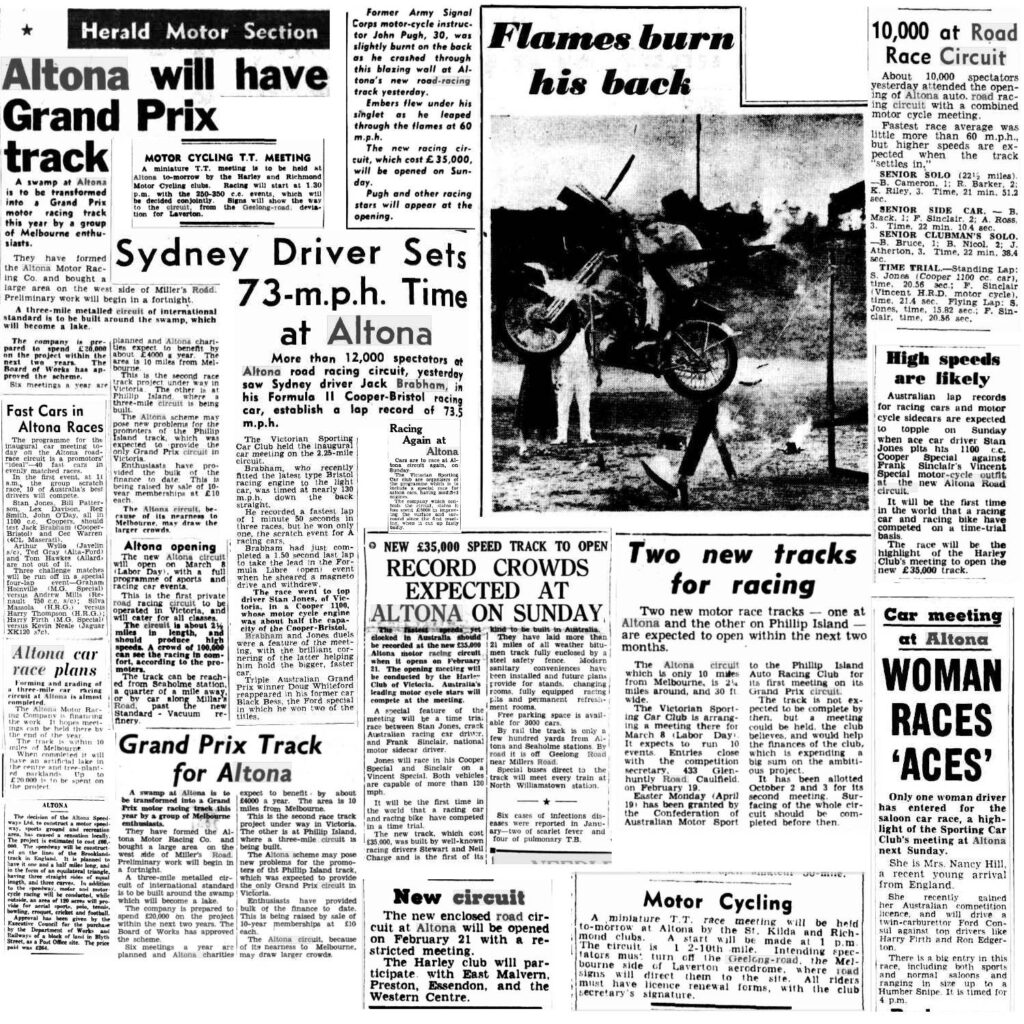
During the 1950s, there was no shortage of interest in local motorsport. Clippings: National Library of Australia
Onsite there was an allowance made for 3,000 car parks, with spectators able to access the venue via the nearby Altona and Seaholme train stations, with shuttle buses operated from the North Williamstown station.
In the post-war environment, there was a thirst for motorsport, and for it to be regularly contested at permanent venues, with the equipment that was used to construct the Templestowe Hillclimb swung back into action on the Altona project.
With the Point Cook RAAF base a one-and-done deal following the 1948 Australian Grand Prix, other local options included the Darley Circuit near Bacchus Marsh for motorcycle racing, and Fisherman’s Bend, which ran a variety of events from 1948 through to 1960, before the old WWII runways degraded and proved unsuitable for competition use.
Ultimately, progress would see Fisherman’s Bend swallowed up by the Westgate Bridge, the Todd Road Kart Track, and the inner-city Holden factory.
Altona itself had a short life, in total six events took place between February 21st, 1954, and May 1955.
Racing provided a real mixed bag of action, with cars, bikes and sidecars taking to the track, with the Harley Club of Victoria behind the two-wheeled races, and the Victorian Sporting Car Club organizing the car meets, with at least one event a 2+4 configuration.
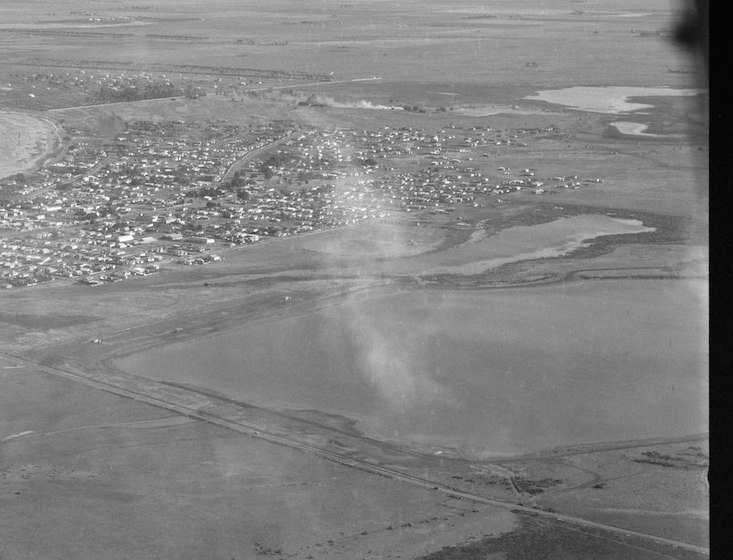
The above image shows the circuit in its racing form, with the track running tight to the edge of the lake, which would subsequently cause significant issues. At the bottom right of the image was Refinery Corner, with the track then running parallel to Millers Road, while at the top is the sweeping esses that led into the hairpin. Also, note how close the nearby houses were to the circuit. Pic: State Library Victoria
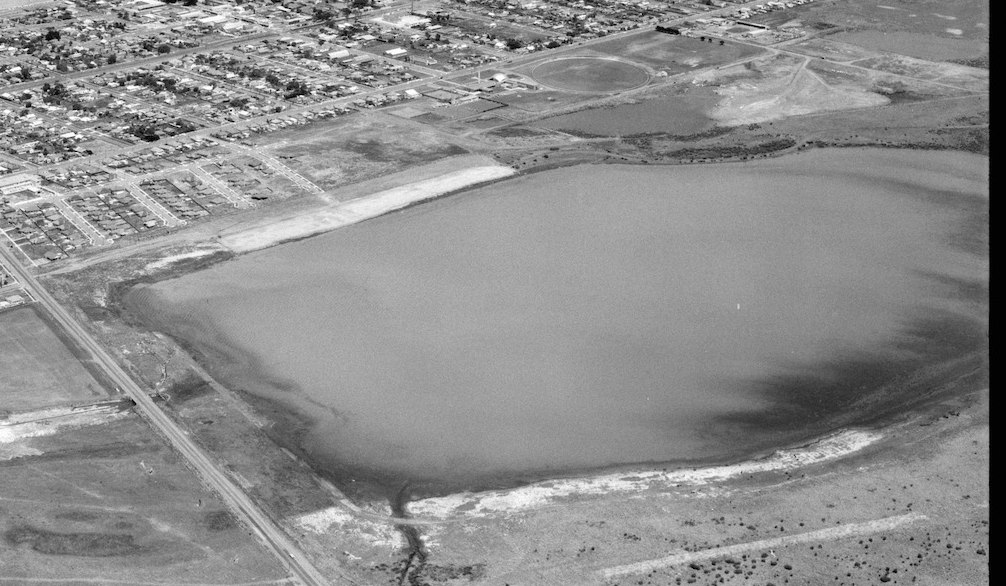
A more recent image shows what was left of the racing surface following the flood of ’55, with further housing being erected next to the reserve. The sections at the bottom and the top of the image can still be found today – if you look hard enough. Pics: State Library Victoria
Running clockwise in direction, the start-finish straight was found on the north side of the lake, with the pits nestled between the track and the lake on the inside of the circuit.
The first right-hand bend was named “Refinery Corner” after the nearby Mobil refinery, which was constructed between 1946 and 1954 for the Standard Vacuum Oil Company, with the circuit then running alongside Millers Road.
The track was pancake flat and roughly rectangular, although there were some gentle esses and sweeping corners, plus a tighter hairpin at the southwest corner added to the mix.
If you look closely at the aerial photographs of the day, you can see just how close the track ran to the side of the lake.
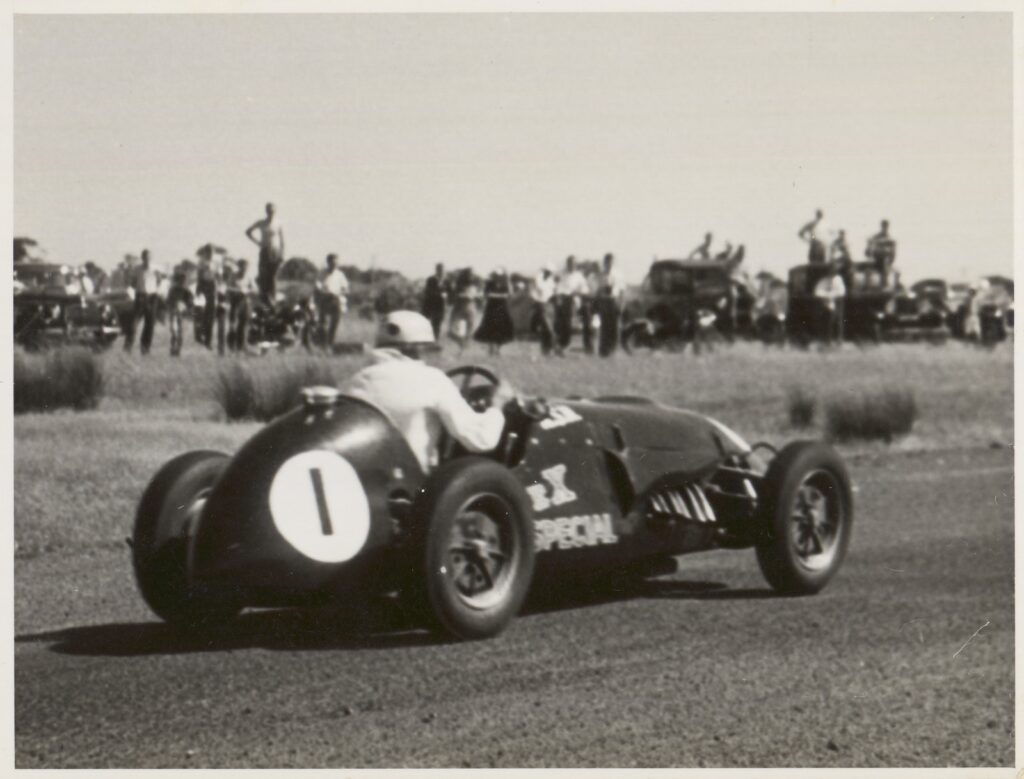
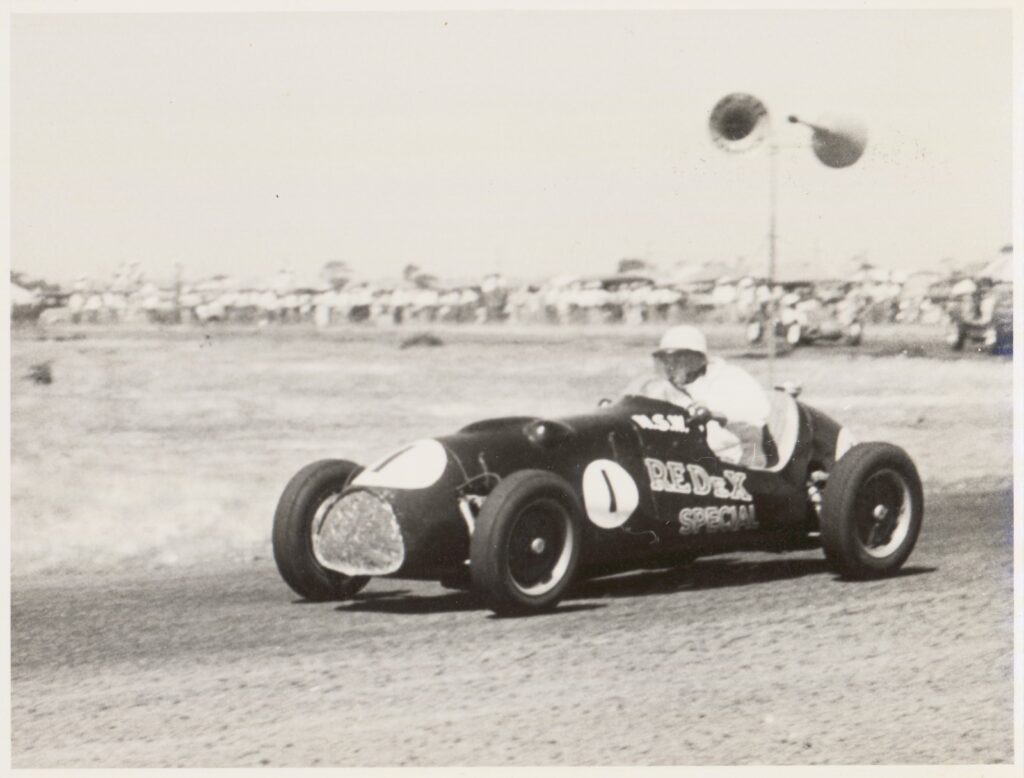
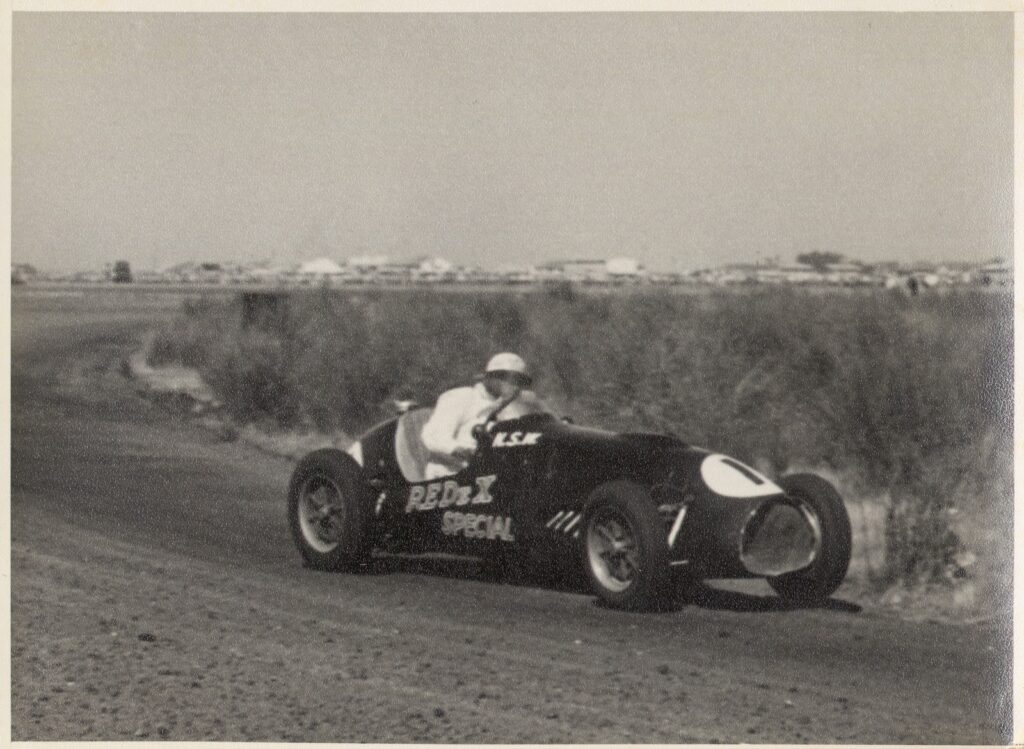
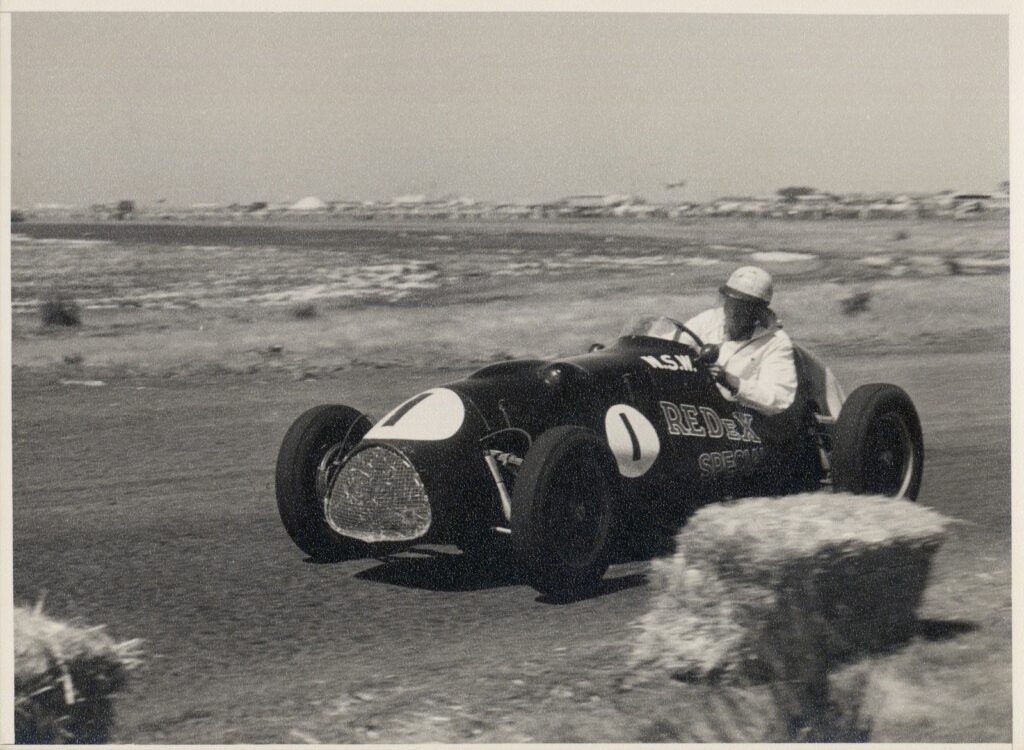
Jack Brabham at Altona. Pics: State Library Victoria
During its time, the most famed racers to take on the venue were future three-time F1 World Champion Jack Brabham, plus AGP winner and Gold Star victor Stan Jones, who was at the peak of his powers during the Altona days, with the pair competing in the opening car event on March 9th, 1954.
Brabham was behind the wheel of his Cooper T23 Bristol Redex Special, with his lap record of 1:50sec set at an average speed of almost 120km/h, although Jones wound up taking the race win in his Cooper 1000 when the Bristol suffered a mechanical failure.
The event attracted the stars of the day in the 40-strong entry, including Reg Smith, Doug Whiteford, and Lex Davison, who campaigned his HWM Jaguar, a combination that later went on to win that year’s Australian Grand Prix on the Gold Coast.
Other competitors mentioned in news stories of the day included Harry Firth, Bill Patterson, Graham Hoinville, Ron Edgerton and Cec Warren, while total prizemoney for events topped £500 each.
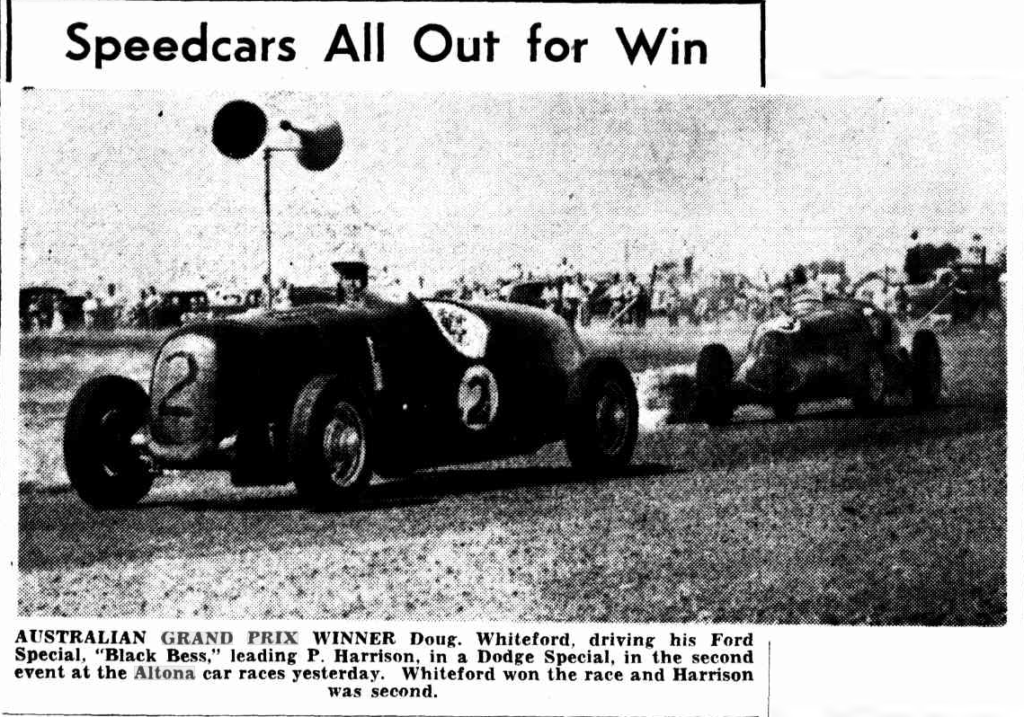
Scenes from the opening event. Image: National Library of Australia
Earlier, Jones was an attraction at the opening bike meet, when he was involved in a match race with a sidecar, which the four-wheeler duly won in what was proclaimed at the time to be a world-first contest.
Altona was a barebones affair, even for the period – you wouldn’t expect to see any barriers of substance lining the track, although that didn’t deter competitors or the thousands of spectators who flocked to the venue, with the Age newspaper reporting an attendance of 10,000 fans for the inaugural bike event, and 12,000 for the first car meet.
That opening motorcycle program was the biggest of its type contested to that date – oversubscribed, the final acceptance list covered 122 solos and 17 sidecars.
Initial issues for the venue included the large boulders that delineated the track from the swamp, a lack of decent runoff, poor track surface and unstable ground, with the newspapers at the time reporting rectification works after the first two events coming in at a cost of £4-5,000, with remedial hot-mix tar coming from the adjacent refinery.
Following a rollover at the opening car meeting, Jack Lanham was admitted to Footscray Hospital with a fractured skull, with later reports stating that he passed away after six months in a coma following unsuccessful surgery.
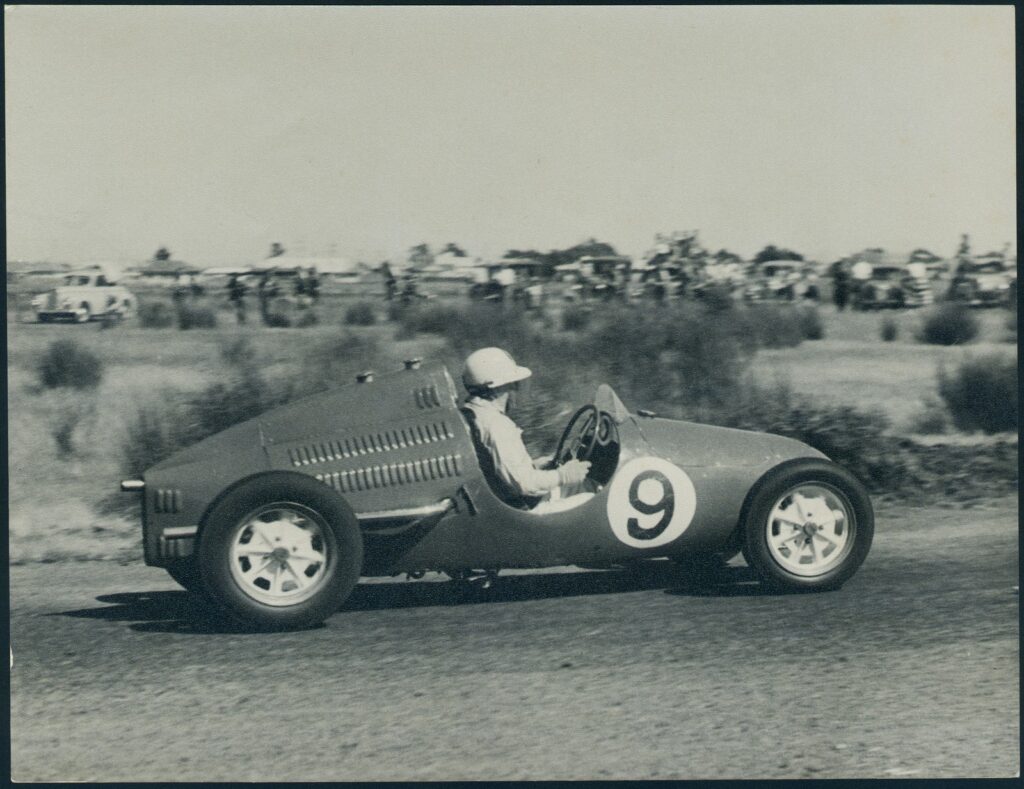
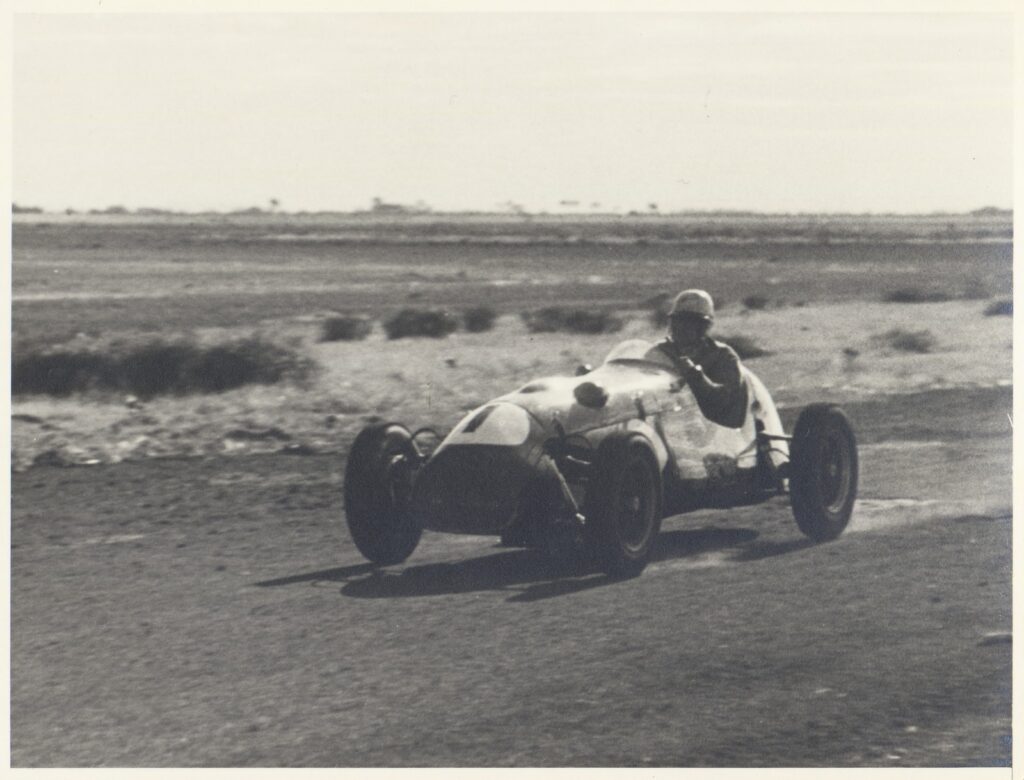
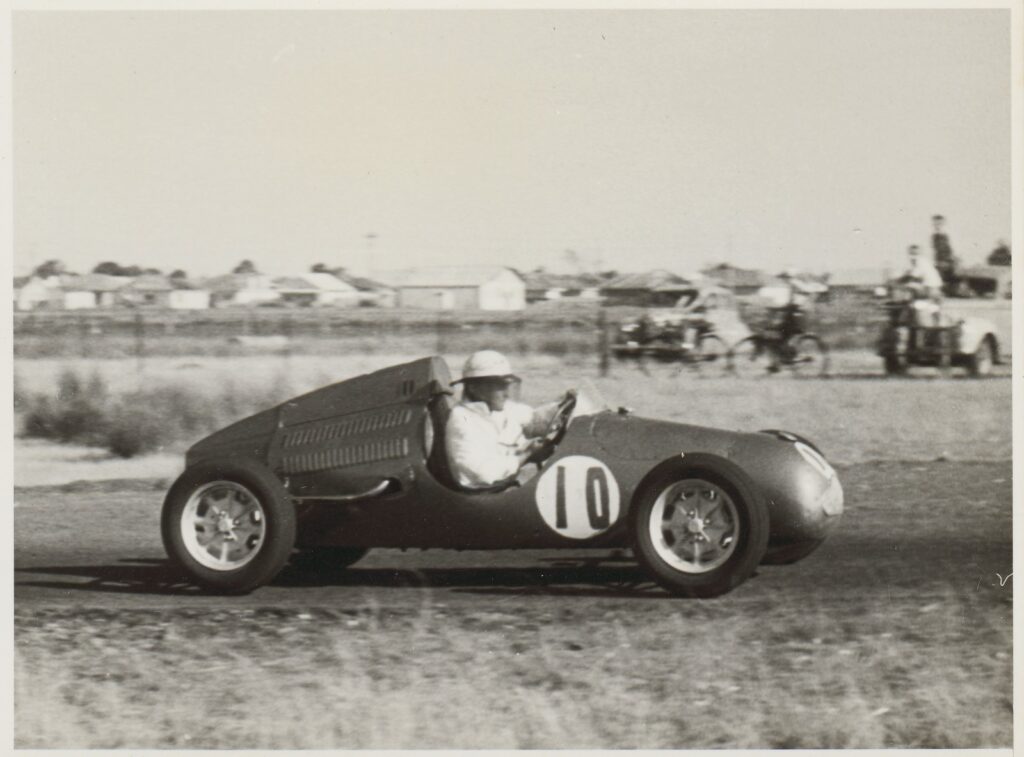
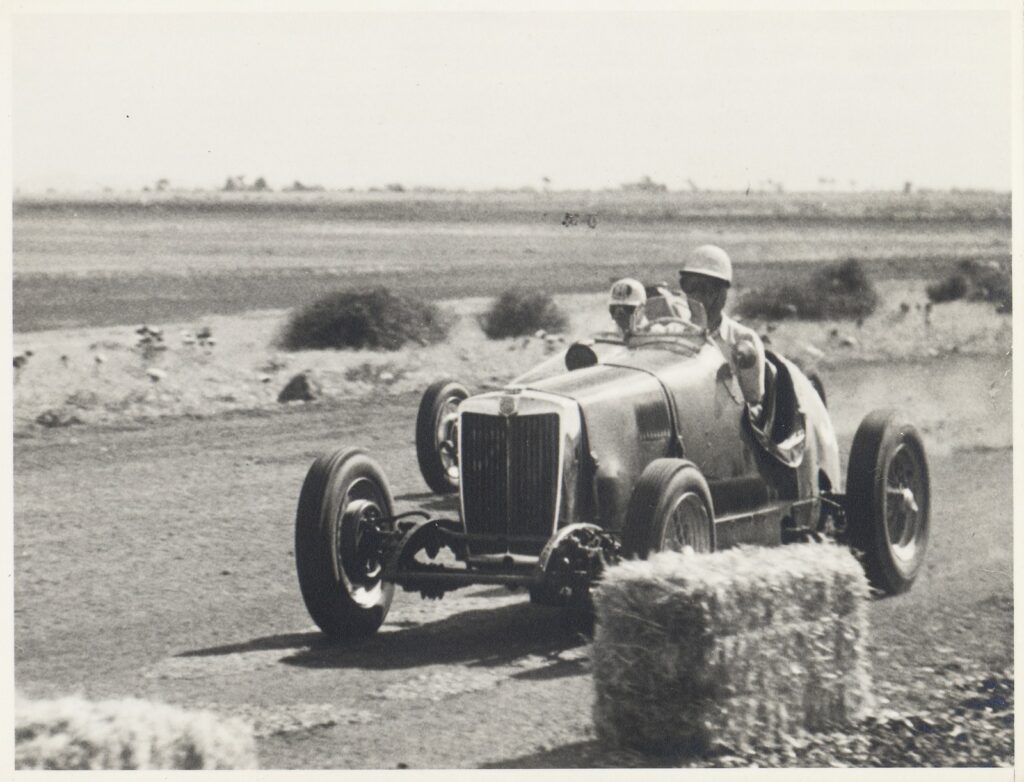
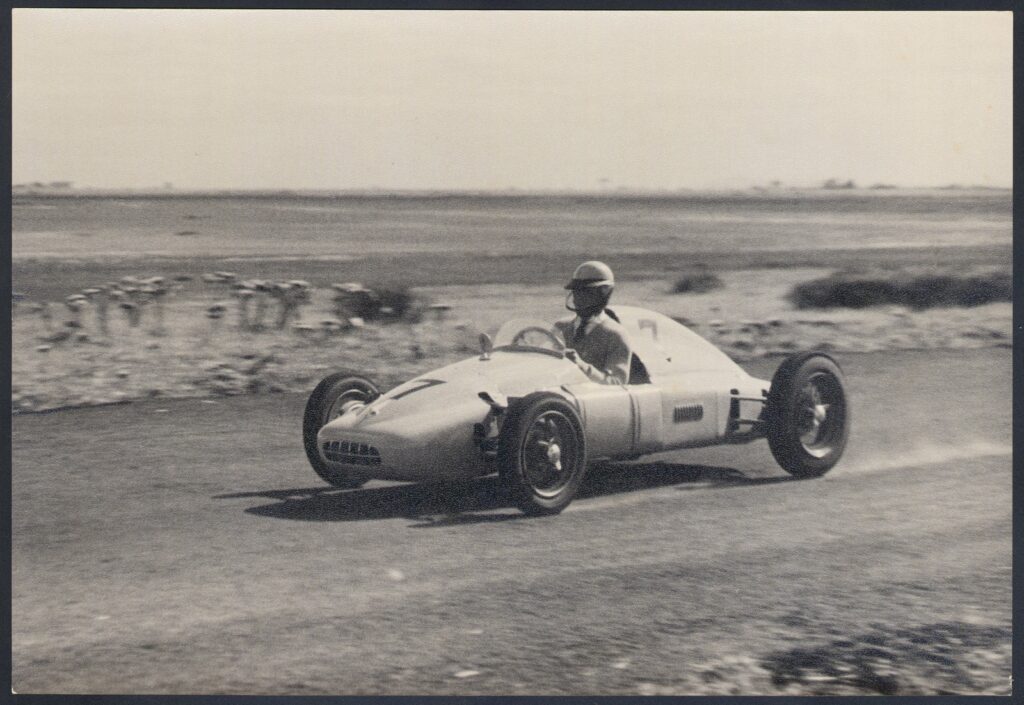
Safety wasn’t a priority on the Altona Road Circuit, although the dapper gentleman above won the award for being best dressed and having the best posture. Pics: State Library Victoria
As the events went on, crowds dwindled – the audience required better facilities, but with fewer people through the gates, the promoters couldn’t afford improvements – a vicious cycle was in play that brought about questions of the facility’s viability.
The promoters had any tough decisions taken out of their hands when changes to the flow of Cherry Creek led to the flooding of the wetlands during the winter of 1955, with the submerged track destroyed by the inundation, with plans to resurrect the venue in 1956 never coming to fruition.
The end of the circuit also culled plans to dredge the Lake to allow for speedboat races.
Despite its own shortcomings, due to its permanent nature and accessibility to Melbourne, Altona stood a fighting chance against other fresh venues of day, Albert Park and Phillip Island, but it was not to be.
In a parallel footnote, the area nearly came to host the 1964 Australian Grand Prix.
Only 500m from Cherry Lake was the old Williamstown Racecourse, which closed to horse racing in 1949, had plans drawn up to build a 4km long motorsport circuit on the site.
The layout would have hugged the Port Phillip Bay coastline and Kororoit Creek, as well as encircle a lake.
Ultimately those plans came to naught, the AGP was held at Sandown, which opened in 1962, and the subject area for the potential westside track became Altona Coastal Park, where the crumbling remains of the old horse racing grandstand remain.
Like Albert Park, Cherry Lake Reserve is now a popular draw for locals, many of whom take in a lap of the 3.5km long walking track, which crosses paths in various sections with the old race circuit.
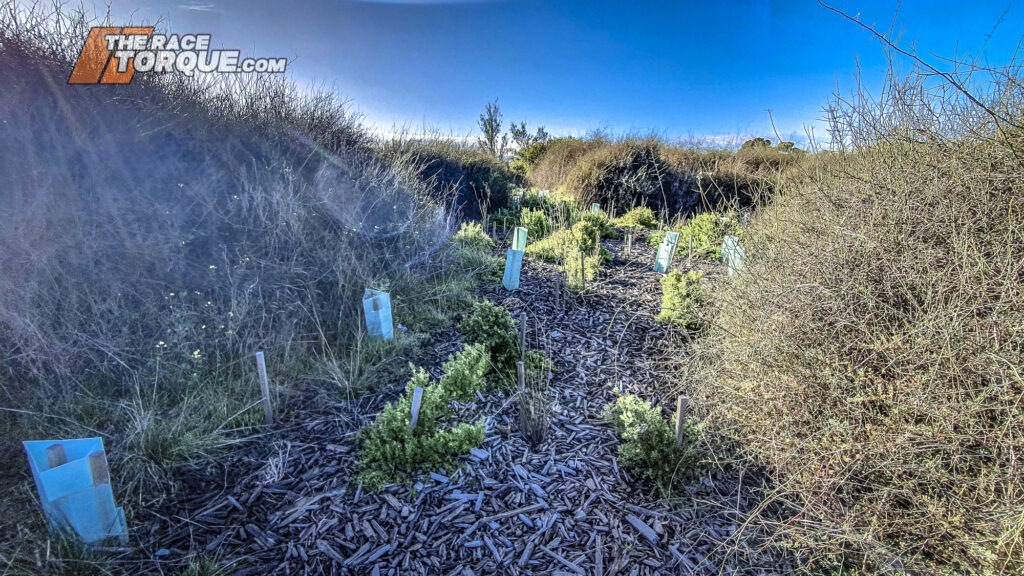
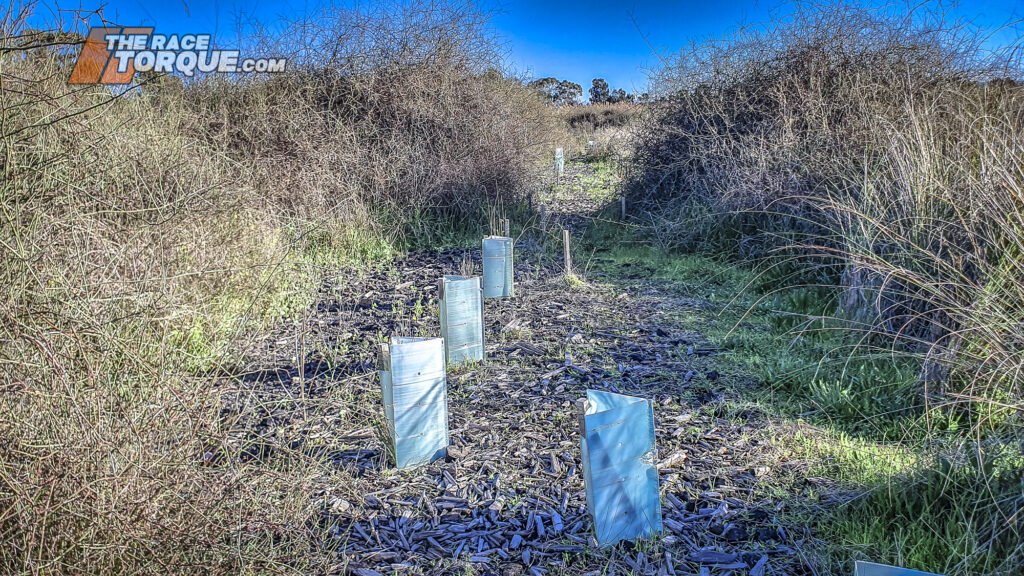
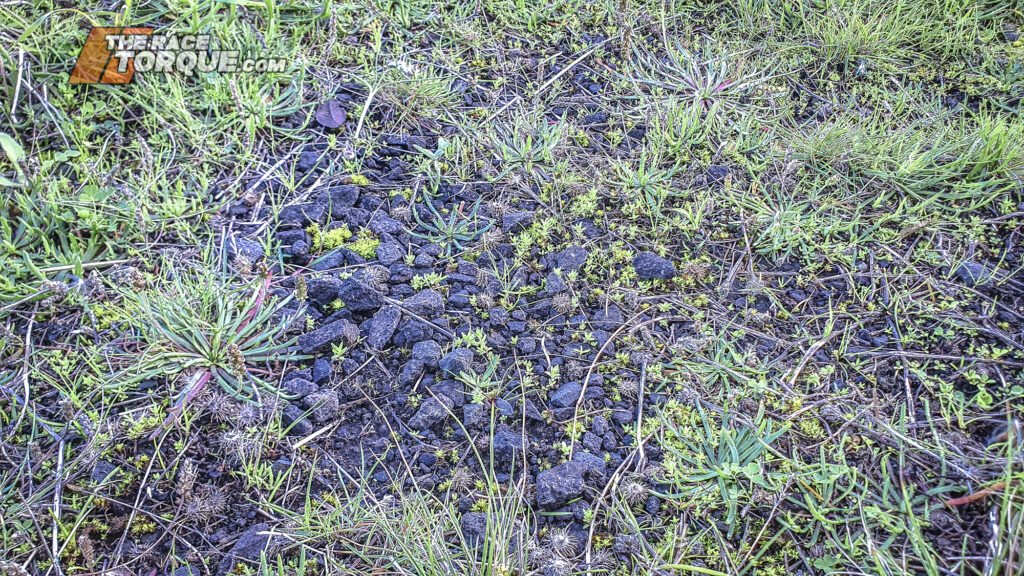
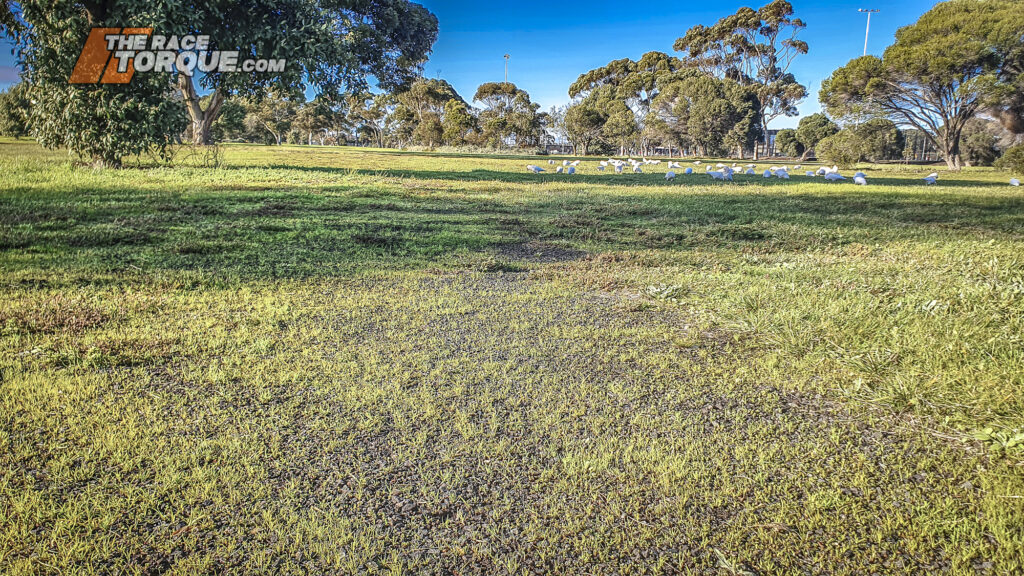
All that is left…
Sadly, not a lot of track survived 1955, and there is even less that can be found now, especially given the significant works and progress carried out to the lake and surrounding parkland over the past 67 years.
Zooming in to the top right corner of the lake on the below Google Map, you can still see a faint outline of Refinery Corner, sweeping to the inside of the walking track.
We had better luck at the western end of the lake – if you zoom in to the map around the “Cherry Lake Reserve” label, you can see a straight section of track leading into a left-hand s-bend.
The straight road is definitely still there, pictured above with the cockatoos grazing by the edge of the old black-top, while the corner closest to the lake has been cordoned off, with revegetation works recently having been carried out.
With some effort, you could probably be able to piece together some more evidence of this old race track in the suburbs.



